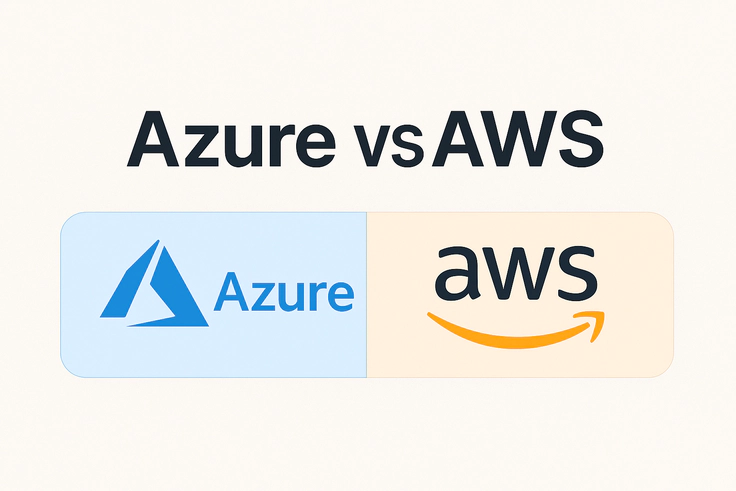Azure vs AWS: Understanding the Constructs and Concepts Across Cloud Providers
When working across cloud platforms, it’s common to hit a wall of terminology confusion. Microsoft Azure and Amazon Web Services (AWS) offer similar capabilities—compute, storage, networking, identity, security—but they often use different names, approaches, and abstractions for the same underlying concepts.
For cloud engineers, architects, or DevOps professionals who juggle both environments (or are transitioning from one to the other), understanding these conceptual mappings is essential. In this post, we’ll walk through the key constructs of Azure and AWS side by side, helping you translate your knowledge across platforms.
☁️ Account Hierarchy and Resource Organization
| Concept | Azure | AWS |
|---|
| Top-level billing/account | Azure Tenant (AAD) | AWS Account |
| Subdivision for resources | Subscription | Organizational Units (OUs) / multiple Accounts |
| Resource grouping | Resource Group | Tags, CloudFormation stacks |
| Management across multiple entities | Management Groups | AWS Organizations |
💻 Compute
| Concept | Azure | AWS |
|---|
| Virtual Machines | Virtual Machines (VMs) | EC2 Instances |
| Managed containers | Azure Container Instances (ACI) | AWS Fargate |
| Container orchestration | Azure Kubernetes Service (AKS) | Amazon Elastic Kubernetes Service (EKS) |
| App hosting (PaaS) | App Service | Elastic Beanstalk, App Runner |
| Serverless compute | Azure Functions | AWS Lambda |
📦 Storage
| Concept | Azure | AWS |
|---|
| Object Storage | Blob Storage (Storage Account) | S3 |
| File Storage | Azure Files | EFS |
| Disk Storage | Managed Disks | EBS |
| Archive Storage | Cool/Archive Blob Tiers | S3 Glacier |
🔗 Networking
| Concept | Azure | AWS |
|---|
| Virtual Network | Virtual Network (VNet) | Virtual Private Cloud (VPC) |
| Subnets | Subnets (inside VNet) | Subnets (inside VPC) |
| Public IP | Public IP Resource | Elastic IP |
| Load Balancer | Azure Load Balancer, Application Gateway | Elastic Load Balancer (ELB) |
| DNS | Azure DNS, Traffic Manager | Route 53 |
🔐 Identity and Access Management (IAM)
| Concept | Azure | AWS |
|---|
| Identity system | Azure Active Directory (AAD) | AWS IAM, IAM Identity Center |
| Role-based access | Role-Based Access Control (RBAC) | IAM Policies & Roles |
| Federated Identity | AAD B2B/B2C | Cognito, STS |
| Service identity | Managed Identity | IAM Role (EC2 Profile / Task Role) |
🛠️ Infrastructure as Code (IaC)
| Concept | Azure | AWS |
|---|
| Native IaC | ARM Templates, Bicep | CloudFormation |
| Cross-platform IaC | Terraform, Pulumi, Ansible | Same |
| Resource deployment model | Declarative (ARM/Bicep) | Declarative (CloudFormation) |
🔍 Monitoring & Observability
| Concept | Azure | AWS |
|---|
| Metrics & Logs | Azure Monitor, Log Analytics | CloudWatch, CloudTrail |
| Application performance | Application Insights | X-Ray, CloudWatch APM |
| Cost analysis | Cost Management + Billing | Cost Explorer, Budgets |
🧠 Summary Table: Azure to AWS Translation Cheat Sheet
| Azure | AWS |
|---|
| Tenant | AWS Organization |
| Subscription | AWS Account |
| Resource Group | Tags / CloudFormation Stack |
| VM | EC2 |
| Blob Storage | S3 |
| VNet | VPC |
| App Service | Elastic Beanstalk / App Runner |
| Azure Functions | AWS Lambda |
| Azure AD | IAM / Identity Center |
| Log Analytics | CloudWatch Logs |
| Azure Monitor | CloudWatch |
| Bicep | CloudFormation / CDK |
🧭 Final Thoughts
Both Azure and AWS provide robust cloud ecosystems capable of running virtually any workload. The core difference lies in how they abstract and organize their services. Azure tends to favor integrated, centralized constructs with clear hierarchies, while AWS emphasizes modularity, isolation, and flexibility.
For engineers straddling both worlds, it’s not just about mapping service names—it’s about understanding the philosophy behind each platform. Once you internalize that, the clouds stop looking like rivals and start feeling like different dialects of the same powerful language.

